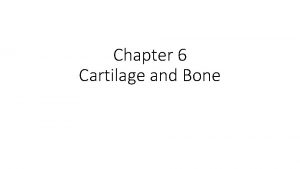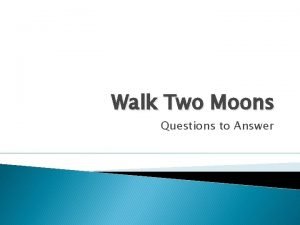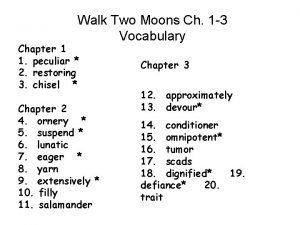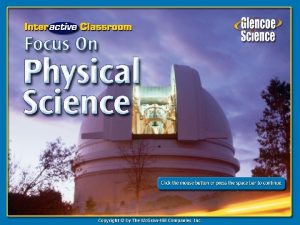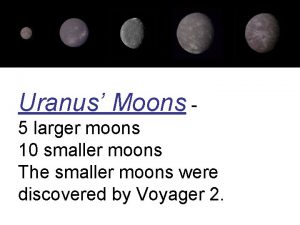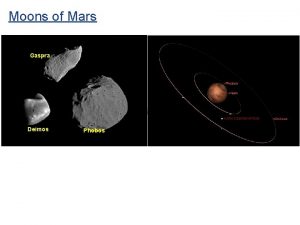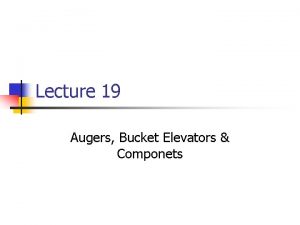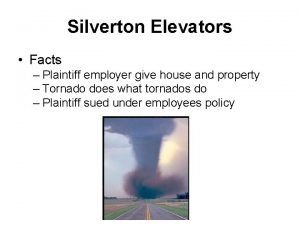Principles use of elevators PERIOSTEAL ELEVATORS 1 Moons



















- Slides: 19

Principles & use of elevators

PERIOSTEAL ELEVATORS 1. Moons probe � A thin flat instrument with small working tip at right angle to handle � Tip is narrow and sharp � Used to separate mucoperiosteum around the tooth prior to extraction. 2. Woodson periosteal elevator 3. Molt No. 9 periosteal elevator 4. Howarth elevator

MOLT’S No. 9 PERIOSTEAL ELEVATOR � � 1. 2. 3. It has a broad flat end on one side and sharp pointed triangular one on the other side. Uses Pointed end used to release dental papilla around teeth (by prying motion). Broad end used for elevating the mucoperiosteal flap from bone (by push stroke). Can be used as soft tissue retractor.

� 1. 2. 3. Elevators Handle – usually large in size to facilitate a good grip, may be at a line or at right angle to shank (cross bar / T – bar) Shank – should be strong enough to withstand transmit forces Blade – its working tip transmits forces to tooth / root / bone, can vary in size and shape

� Classification A) According to their working principle 1. Lever principle – Straight elevator -- Crane pick elevator 2. Wheel & axel -- Potts elevator -- Winter elevator -- Cryers -- Winter cryers 3. Wedge principle – Apexo elevators -- Apical elevators

B) According to their form 1. Straight – Straight elevator -- Coupland elevator 2. Angular – Hockey stick -- Warwick james -- Miller elevator 3. Cross bar – Potts elevator -- Winter elevators -- Cryer -- Winter cryer

C) According to their function 1. Tooth elevators – Straight -- Coupland -- Miller -- Potts -- Warwick james -- Winter elevators 2. Root elevators – Cryers -- Winter cryers -- Crane pick -- Apexo elevators 3. Apical elevators – Root tip pick

Straight elevator (London hospital pattern / Coleman) � Having a straight blade with one convex surface and another flat serrated working surface � Handle may be serrated � Most commonly used elevator to luxate teeth Coupland retractor (Gouge) � Having a straight blade with one convex surface and another concave working surface � Used to elevate teeth (smaller one for unerupted tooth whereas larger one for widely spaced teeth)

Miller elevator � Slight curve at end of shank which allows blade to be inserted into soft maxillary bone between distal root of second molar and crown of third molar � Used specially for impacted third molar Potts elevator � A variant of Miller elevator which is smaller and weaker and has a cross bar � Use, same as that of Miller.

Hockey stick elevator � A variant of London hospital pattern straight elevator which has blade at an angulation to shank � Used for maxillary molars Warwick james elevator � Similar to hockey stick elevator but smaller and more delicate � No serrations on blade � Used for maxillary molars

Winter elevators ( Cross bar / T bar) � Handle is at right angle to shank � Working tip is at an angle to the shank � Blade has two surfaces, one convex and another flat working surface � Used for mandibular molars.

Cryer elevator � A elevator with a triangular blade � Working tip is angulated � Has two surfaces one convex and another flat working surface � Used for extraction of root stumps of mandibular molars (when one root is moved out and another left behind) Winter cryers � A cryer elevator with cross bar � Principle and uses, same as that of cryer

Crane pick elevator � A variant of straight elevator with angulated sharp blade (in vertical direction) � Used as a lever to elevate a broken root from tooth socket � Usually necessary to drill a hole into the root into which the tip of blade is inserted and using buccal plate as a fulcrum, tooth is elevated. Apexo (Wedge) elevator � Having a bi-angulated sharp working tip � Working surface is grooved � Used to elevate root pieces by wedging in between root and bone surface

� � � 1. 2. 3. 4. Root tip pick A delicate instrument with sharp, pointed angulated working tip Used to tease small root tips from their sockets Rules for using elevators Never use the adjacent teeth / buccal / lingual plate as fulcrum Always use finger guard to protect the soft tissues incase elevator slips Support the shank with index finger to control forces Always elevate from mesial and buccal side

Elevator principles �First order lever principle �Wedge �Wheel principle & axle principle

R PLE

WEDGE PRINCIPLE

WHEEL & AXLE PRINCIPLE

Thank you
 Hospital pattern elevator uses
Hospital pattern elevator uses Full mouth extraction sequence
Full mouth extraction sequence Chondrocytes sits in holes called
Chondrocytes sits in holes called Where did sal move to in walk two moons
Where did sal move to in walk two moons Questions for walk two moons
Questions for walk two moons What does it look like on neptune
What does it look like on neptune Lakota moons
Lakota moons Walk two moons study guide
Walk two moons study guide Walk two moons vocabulary
Walk two moons vocabulary Many moons
Many moons Scientific revolution project
Scientific revolution project Pluto planta
Pluto planta Walk two moons read aloud
Walk two moons read aloud Sierra escape
Sierra escape Two moons
Two moons Planet moons
Planet moons Moons
Moons Walk two moons chapter 9
Walk two moons chapter 9 Moons pattern
Moons pattern Joyful mystery pictures
Joyful mystery pictures


